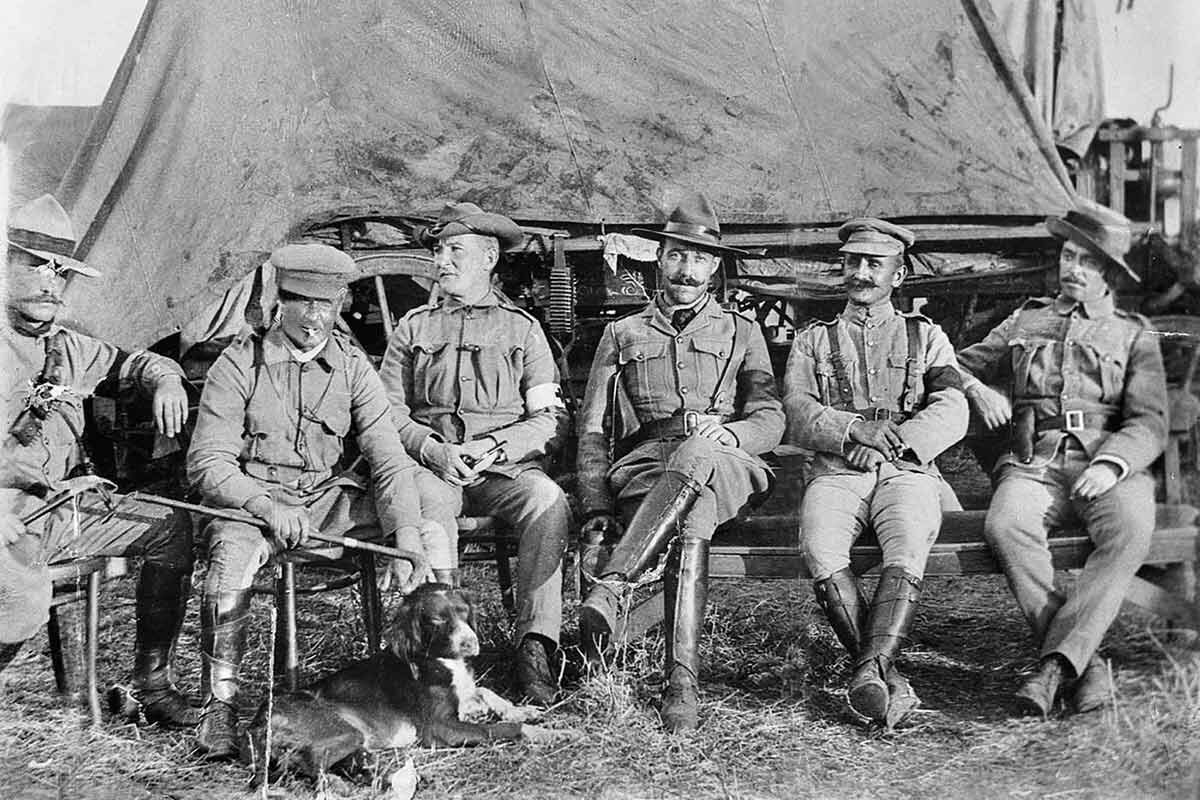Defining Moments in Australian History: ‘Breaker’ Morant executed

Just before the Boer War ended, lieutenants Harry ‘Breaker’ Morant and Peter Handcock were executed for murdering prisoners of war.
Britain reluctantly shared dominion of southern Africa with Dutch settlers called Boers throughout the 1800s.
Tensions were evident from the outset, but heightened between the 1860s and ’80s when diamonds and gold were found in Boer-occupied areas. Britain sought to control these resources, but the Boers resisted, and declared war in October 1899 after a British raid on their territory.
At first, the Boers had the advantage and besieged cities such as Ladysmith and Mafeking. But from late 1899, the British brought in large numbers of troops and mounted a successful counter-offensive. More than 500,000 soldiers fought for the British against just 50,000 Boers, who turned to guerrilla tactics.
Under Lord Kitchener’s command, the British followed suit, cutting Boer commandos off from food and their families. They destroyed Boer farms and interned civilians in concentration camps where, weakened by malnutrition, 28,000 Boer women and children and at least 20,000 Africans died.
The brutal strategy was effective: the Boers surrendered in May 1902.
As part of the British Empire, Australia provided 16,000 troops, including Edwin Henry Murrant, who was born in England but moved, aged 19, to Australia in about 1883. Reinventing himself as Harry Harbord Morant, he built a reputation as a drover and womaniser and contributed bush ballads to The Bulletin magazine under the name of ‘the Breaker’.
When war broke out, he enlisted in Adelaide and arrived in South Africa in February 1900. Later that year he sailed to England, where he befriended Captain Percy Hunt, who’d also served in the war. The pair returned to South Africa in March 1901.
By then, to counter the Boers’ guerrilla tactics, the British had formed irregular units such as the Bushveldt Carbineers (BVC), which included many Australians.

After joining the BVC, Hunt and Morant were posted to Fort Edward in the northern Transvaal, where fighting was especially bitter. In August 1901, a group of Boers killed Hunt and mutilated his body. Morant assumed command of Hunt’s detachment, which then pursued his friend’s killers.
Back in Fort Edward, Morant ordered eight surrendering Boers to be executed. Soon afterwards, Morant and two others killed three more Boers. A passing missionary, Reverend Heese, was also shot after leaving Fort Edward. It was alleged Morant ordered Lieutenant Peter Handcock to kill Heese because he’d witnessed these murders.
Morant, Handcock and four other BVC officers were arrested on 7 September 1901 and charged with murder. Major J. F. Thomas, a solicitor from Tenterfield in NSW, was ordered at short notice to represent them and the trial began on 17 January 1902.
Central to the defence was that the officers had acted on orders from superiors, right up to Lord Kitchener, to take no prisoners. But Thomas failed to substantiate such an order. Morant, Handcock and another Australian, Lieutenant George Witton, were convicted of 12 prisoners’ murders but not of Heese’s murder. Witton was given a life sentence but released after four years.
With Kitchener’s approval, Handcock and Morant were executed by firing squad on 27 February 1902. The executions of Morant and Handcock have long divided public opinion. At the time, Australians were both shocked that our officers could commit such crimes and that Britain would execute them.
The Bulletin published editorials defending Morant and many felt the Australians were seen as expendable because they were ‘colonials’. Why had Kitchener sanctioned the trial and hasty execution of officers carrying out what was common practice on both sides?
His imagined motives included appeasing the German government over the death of Heese and, ahead of a treaty, deflecting attention from Boer civilian deaths in concentration camps.
Ruthless aristocrat Kitchener and charismatic larrikin Morant seemed to embody the differences between Britain and Australia, as the latter tried to establish its national identity in the wake of Federation, which had taken place midway during the war.
‘‘Breaker’ Morant executed’ forms part of the National Museum of Australia’s Defining Moments in Australian History project.





